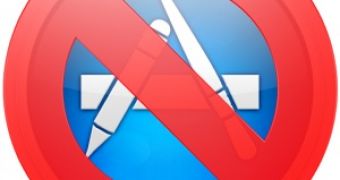With the launch of the sixth incremental update to Snow Leopard, Apple introduced the Mac App Store, a new way to discover, download, and enjoy Mac desktop applications.
In fact, one could say that the sole purpose of launching Mac OS X 10.6.6 was to have the Mac App Store installed on users’ computers.
But that's not entirely accurate.
In addition to the Mac App Store, Apple’s 10.6.6 update to Snow Leopard delivers security fixes, addresses a cropping issue with some postscript printing in landscape page orientation, and resolves an issue with some Macs (that have in ATI graphics card) in which the mouse pointer movement could become erratic if an external DVI display is connected.
Some appear to be in need of these fixes, but don’t want to have the Mac App Store installed in the process. Yet, this is done automatically once the user accepts to download and install the update.
Now, a large number of Mac users say they’re displeased with Apple’s decision to have the Mac App Store automatically installed, and want it removed from their computers.
Some even believe this is a bad business decision, and one that compares well to Microsoft’s own business model.
Many of them are parents who, for one reason or another, see the Mac App Store as a threat.
Others simply want to have it removed so that iTunes links for Mac apps don’t launch the Mac App Store interface anymore.
For whatever reasons others may have to remove the Mac App Store, removing the Mac App Store is fairly simple - delete the program.
However, this is not an official solution. It only removes the Mac App Store while keeping the rest of the improvements delivered in Mac OS X 10.6.6.
These are the actual steps that ensure you have removed the Mac App Store:
Step 1 - If the Mac App Store icon is not in the Dock, use Spotlight (CMD + Space bar) to locate it in your Applications folder. Type “Mac App Store” in the search field.
Once the Mac App Store is found and selected, hold down CMD and hit Return (Enter) to get to it without actually launching the app.
If the app's icon is in the Dock, simply Command-click it, and it will show up in Finder.
Step 2 - With the Mac App Store application located in Finder, drag it to the Trash.
Note: Just in case you may decide you want the Mac App Store back, make a backup of the app by archiving it and storing it somewhere on your computer’s hard drive. This way, you won’t have to re-apply the Mac OS X 10.6.6 update, if you want it back again. If you do, simply unarchive and copy the Mac App Store back to your applications folder.
Step 3 - Empty trash to make sure iTunes links don’t “resurrect” it.
Update: Apparently, deleting the Mac App Store using cleaning utilities like AppCleaner, or CleanMyMac also removes some of the subsequent errors. On the other hand, installing it back again may require re-applying Mac OS X 10.6.6.
Bottom line, uninstalling the Mac App Store is still not recommended.
Disclaimer: As noted above, this is not an official (Apple-supported) resolution.
Deleting the Mac App Store may alter the behavior of your Mac, as it was intended to be a part of Mac OS X 10.6.6.
In other words, the Mac App Store is a “system application.” Removing it may corrupt your system.
If you choose to remove the Mac App Store from your computer using the steps described above, you will do so at your own risk.

 14 DAY TRIAL //
14 DAY TRIAL //